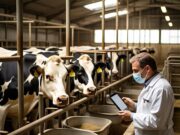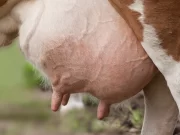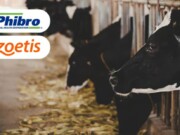
Mastitis, the inflammation of the mammary gland, is a significant concern in dairy farming. It not only affects milk production but can also compromise the overall health and well-being of dairy animals. Effective management and prevention strategies are essential to maintain udder health and ensure a productive and sustainable dairy operation.
Understanding Mastitis
Mastitis is commonly caused by bacterial infections, with pathogens entering the udder through the teat canal. Other factors, such as poor milking hygiene, inadequate nutrition, and environmental conditions, can contribute to its development. Identifying the signs of mastitis early is crucial, including swelling, redness, heat, and changes in milk consistency or colour.
Management Strategies
1. Hygiene Practices
Maintaining proper milking hygiene is paramount in mastitis management. Regularly clean and sanitize udders and teats before milking to minimize the risk of bacterial contamination. Proper cleaning of milking equipment is equally important to prevent the spread of infections.
2. Timely Milking Routine
Establish a consistent and gentle milking routine. Ensure that cows are not overly stressed during milking, as stress can compromise their immune system, making them more susceptible to infections. Regular and complete milking helps prevent the accumulation of milk, reducing the risk of bacterial growth.
3. Dry Cow Management
Proper management of dry cows is crucial in preventing mastitis. Implement a dry cow therapy program, which involves treating udders with antibiotics during the dry period to eliminate existing infections and protect against new ones.
4. Nutritional Management
Provide a balanced and nutritionally rich diet to enhance the immune system of dairy animals. Proper nutrition contributes to overall health and helps cows resist infections. Ensure access to clean water, as dehydration can increase the likelihood of mastitis.
5. Culling Infected Cows
Identify and isolate cows with chronic or severe mastitis to prevent the spread of infection to healthy animals. In some cases, culling may be necessary to maintain the overall health of the herd.
Prevention Strategies
1. Regular Monitoring and Testing
Implement a routine monitoring program to identify mastitis early. Conduct regular somatic cell count (SCC) tests, which can indicate the presence of infection before clinical signs appear.
2. Vaccination
Consider vaccination programs to protect against common mastitis-causing bacteria. Consult with a veterinarian to determine the most appropriate vaccines for your herd.
3. Comfortable Living Conditions
Provide comfortable and clean living conditions for dairy animals. Proper bedding, well-ventilated barns, and dry environments help reduce stress and minimize the risk of bacterial contamination.
4. Training and Education
Train farm personnel on proper milking techniques, hygiene practices, and the early detection of mastitis. Educate staff about the importance of prompt reporting and treatment.
Conclusion
Effective mastitis management and prevention are essential components of successful dairy farming. By implementing a comprehensive approach that includes proper hygiene, nutrition, routine monitoring, and vaccination, dairy farmers can promote udder health, ensure milk quality, and maintain the sustainability of their operations. Regular veterinary consultations and staying informed about the latest advancements in mastitis control contribute to the overall success of a dairy farm.




















